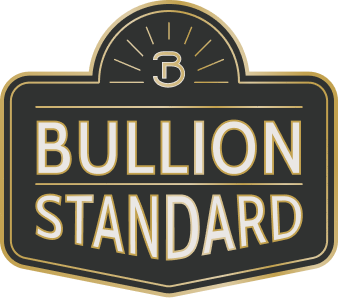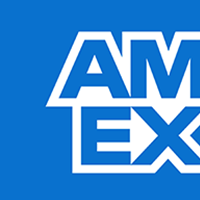Understanding the Gold Premium: What You Need to Know
By Bullion Standard ·
6 min read
If you’re just stepping into the world of precious metal investing, terms like "gold premium" might be confusing.
Simply put, it’s the additional charge on top of the gold's spot price. But this raises important questions: Why is there an extra cost? Should you be cautious or embrace it?
At Bullion Standard, our mission is to empower investors with knowledge and fair pricing. We’re here to help you make informed decisions and understand the true value of your gold investment. In this guide, we will demystify the gold premium, showing you what it is, how it's calculated, and why it plays a vital role in your gold investments.
What Is the Gold Premium?
The spot price of gold is the current market price at which gold can be bought or sold for immediate delivery. The gold premium is the mark up you pay above the spot price of gold.
The premium represents the additional cost of acquiring physical gold, such as coins or bars, and typically includes factors like manufacturing, distribution, and dealer markups.
One such factor is the U.S. Mint's Authorized Purchaser Program. It plays a significant role in shaping premiums by setting guidelines for the distribution and pricing of gold products. This program ensures that only authorized dealers can buy gold directly from the U.S. Mint, which in turn influences the premiums that consumers pay.

Factors That Influence the Gold Premium
Several factors contribute to the gold premium. Understanding these factors will help you make better buying decisions.
1. Supply and Demand
When demand for gold is high, the premium increases because dealers may raise prices to capitalize on the increased interest. This is particularly evident during times of economic uncertainty when investors flock to gold as a safe-haven asset.
Conversely, if there’s limited supply, such as during mining disruptions or high market volatility, the scarcity can drive premiums even higher, as fewer physical gold products are available to meet demand.
2. Type of Gold Product
Gold coin premiums are often higher than bars due to their popularity and the additional costs involved in their production.
For instance, coins like the American Gold Eagle or Canadian Maple Leaf are not only valued for their gold content but also for their intricate designs and collectibility.
Additionally, the minting process for coins is more labor-intensive compared to bars, further contributing to the premium.
3. Purity and Weight
Gold products with higher purity levels or unique weights might come with higher premiums because they are more costly to produce and more difficult to source.
High-purity gold, such as .9999 fine gold, requires more refining, which increases production costs. Similarly, non-standard weights, such as fractional gold coins or bars, often come with higher premiums due to the increased demand.
4. Dealer Markup
Dealers add a markup to cover their costs and make a profit, which includes overhead expenses like storage, insurance, and shipping.
The markup can also reflect the dealer's level of service, with higher premiums often seen at dealers that offer more personalized or premium services. As a result, the markup varies from dealer to dealer, so the premium you pay can differ based on where you purchase your gold.
5. Mint and Brand
Gold from well-known mints or brands often has a higher premium due to their established reputation.
In particular, brands like the U.S. Mint or Royal Canadian Mint are trusted for their purity and consistency. Collectors and investors are often willing to pay a higher premium for these products, as they also offer better resale value due to their recognized and respected brand names.
Compare Gold Premiums
Different dealers offer different premiums. That’s why you should do your due diligence to find reputable dealers with fair premiums.
To do this, look at the percentage above the spot price, not just the total cost. This allows you to find the lowest premium and the best value for your investment.
How Is the Gold Premium Calculated?
The gold premium is usually expressed as a percentage of the spot price. It represents the difference between the spot price and the actual price paid for physical gold, including additional costs such as manufacturing, distribution, and dealer markups.
The premium percentage is calculated by dividing the premium amount by the spot price and then multiplying by 100.
For example, if the spot price of gold is $1,800 per ounce and you pay $1,860 for a gold coin, the premium is $60. This means the premium percentage is 3.33%.
How to Avoid Paying Too Much
To avoid paying too much for gold, it’s essential to understand the factors influencing the premium. Here are some tips to help you save money.
- Be Patient: Don’t rush into a purchase. Take your time to compare prices and premiums across different dealers.
- Avoid Emotional Buying: Emotional buying during times of panic can lead to overpaying. Stick to your investment strategy and avoid impulse buys.
- Consider the Long Term: Gold is often seen as a long-term investment. While the premium might seem high now, consider how it fits into your overall financial goals.
- Buying in larger quantities: Buying in bulk can often reduce the premium per ounce. This is because the dealer’s costs are spread over more units.
- Promotions: Some dealers offer promotions that lower the premium. Keep an eye out for these opportunities to save money.
Final Thoughts
Adding precious metals like gold to your investment portfolio is a sound investment strategy. However, to truly benefit, be aware of all the costs, including the gold premium, to ensure you're making the best decisions.
Knowing how premiums fluctuate due to factors like product type, purity, and market conditions will help you time your purchases wisely and optimize your investment returns.
At Bullion Standard, we’ve spent over two decades perfecting the art of gold investment. Whether you’re just getting started or looking to refine your strategy, we’re here to help. Visit our website or contact us today to get started.






















